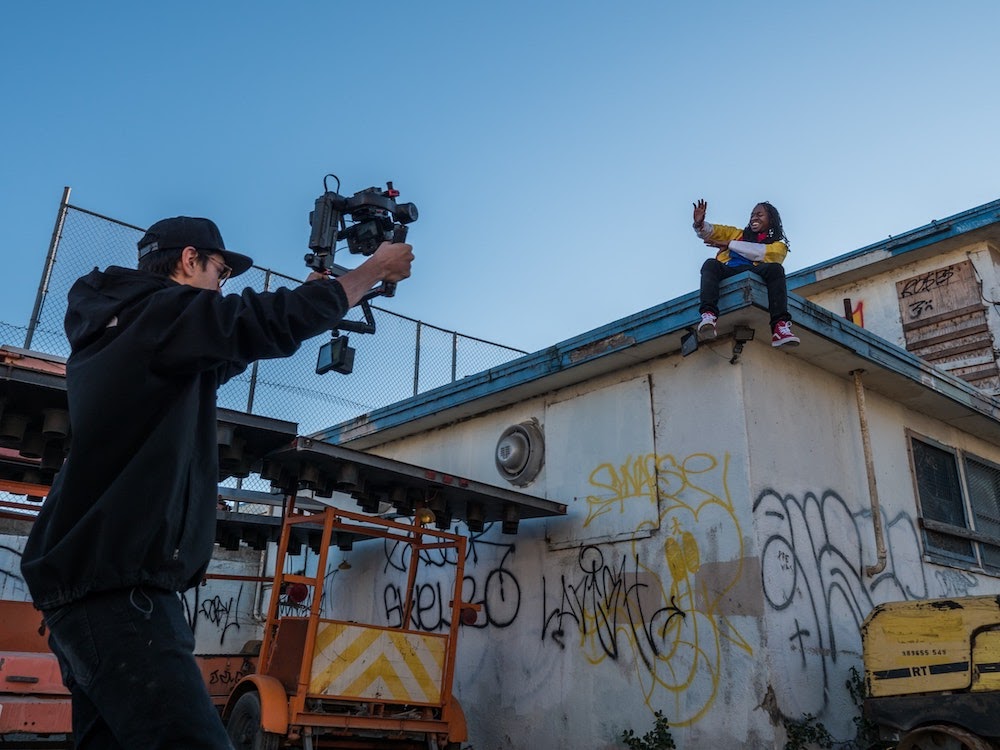The “freeze frame” is a special effect that’s been loved for almost as long as film has existed. These days, we associate them largely with epic sports moments, where they allow us to pause for a moment at the peak of the action before diving back into the fast-paced footage.
DaVinci Resolve makes it relatively easy to create a freeze frame effect right in your timeline, without plugins or layered video effects.
In this guide, we’ll walk you through how to create a professional freeze frame effect in DaVinci Resolve, so you’ll be ready to hang on that game-winning shot or freeze the climax of a film for a moment of avant-garde drama.
How to create a freeze frame effect in DaVinci Resolve
There are three different methods to create a freeze frame effect in DaVinci Resolve. We’ve given you step-by-step instructions for each and arranged them from the least to the most involved.
Which one you end up choosing will largely depend on your comfort level with each of the control menus and whether or not you want to be able to add effects to your freeze frame outside of DaVinci Resolve (think adding on graphics or photo manipulations in Photoshop).
Option 1: Using “Change Clip Speed”
This is definitely the easiest way to create a freeze frame effect in DaVinci Resolve, especially if you’re already familiar with the “Change Clip Speed” controls.
Step 1: Drag the clip you want to export a still from to the timeline.
Step 2: Move the timeline marker to the beginning of the moment you want to freeze.
Step 3: Use the “Blade” tool (B key) to slice the clip at this point.
Step 4: Use the right arrow key to move the marker one frame forward.
Step 5: Use the “Blade” tool (B key) again to slice the clip, creating a new clip that’s one frame long.
Step 6: Right-click (or Ctrl + click) on the single frame clip and select “Change Clip Speed” from the drop-down menu.
Step 7: In the “Change Clip Speed” settings window that appears, check the box next to “Freeze Frame.”
Step 8: Go to “Duration” and enter how long you want the freeze frame to last.
Step 9: Click “Change” to lock in your changes.
Option 2: Using “Retime Controls”
This is a slightly more involved method, but it does give you a lot more control over your freeze frame effect and is a much less “destructive” editing method as it doesn’t require cutting your clip.
Step 1: Right-click (Ctrl + click) on the clip you want to freeze frame.
Step 2: Select “Retime Controls” from the drop-down menu.
You will now see a series of yellow arrows below the clip name on the timeline, and a black arrow at the bottom of the clip.
Step 3: Position your play head at the moment you want to freeze frame.
Step 4: Click on the black arrow at the bottom of the clip preview to open the Retime Controls menu.
Step 5: Select “Freeze Frame.”
You will now see two “speed points” applied to your clip (they will look similar to clip markers) where the yellow arrows are.
Step 6: Extend the duration of your freeze frame by grabbing the second speed point and dragging it to the right.
Create together remotely, in real time


Option 3: Using “Grab Still”
This is definitely the most involved method to creating a freeze frame effect, but it can be really useful if you want to overlay your freeze frame with a graphic from Photoshop or another image manipulation program, as you can export your still before re-inserting it into the project.
Step 1: Move the play head to the moment you want to freeze frame.
Step 3: Click on the "Color" workspace icon at the bottom of the workspace to enter the Color workspace.
Step 4: In the top right hand corner of the Color workspace, click on "Gallery" to open the gallery window.
Step 5: Right-click (or Ctrl + click) on the preview window to bring up a drop-down menu.
Step 6: Select "Grab Still" from the drop-down menu.
The still will now appear in the “Gallery” bin to the left of the workspace.
Step 7: Use the “Blade” tool (B key) to slice your clip where you extracted your still.
This will allow you to insert your “freeze frame” still for whatever duration you’d like.
Step 8: Navigate to the still in the Gallery bin and drag and drop it back onto the timeline.
Step 9: Reposition the second half of the split clip to the end of the still to create a seamless freeze frame effect.
Final thoughts
The freeze frame is an effect that pretty much every editor should be able to reproduce, especially if you work with action or sports footage. With these three methods, you should be able to create the perfect freeze on pretty much any project.
For more help with editing and working in DaVinci Resolve, check out these articles:
If you're looking for a better way to bring your remote video editing process closer to an in-studio feel, check out Evercast. It’s the best low latency streaming solution for virtual collaboration.














